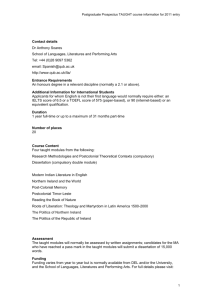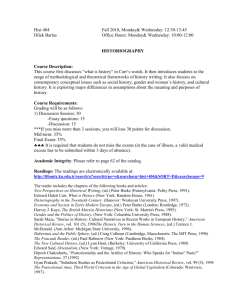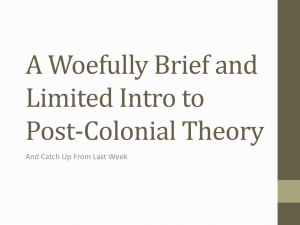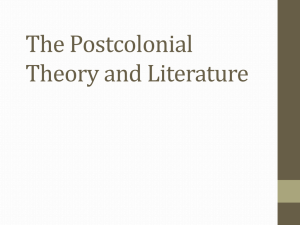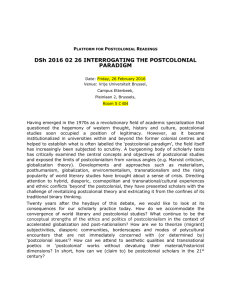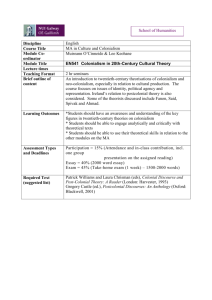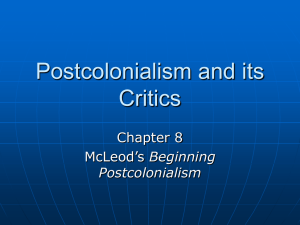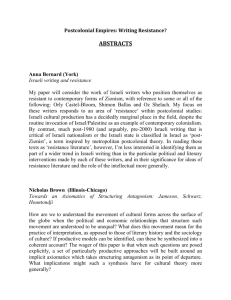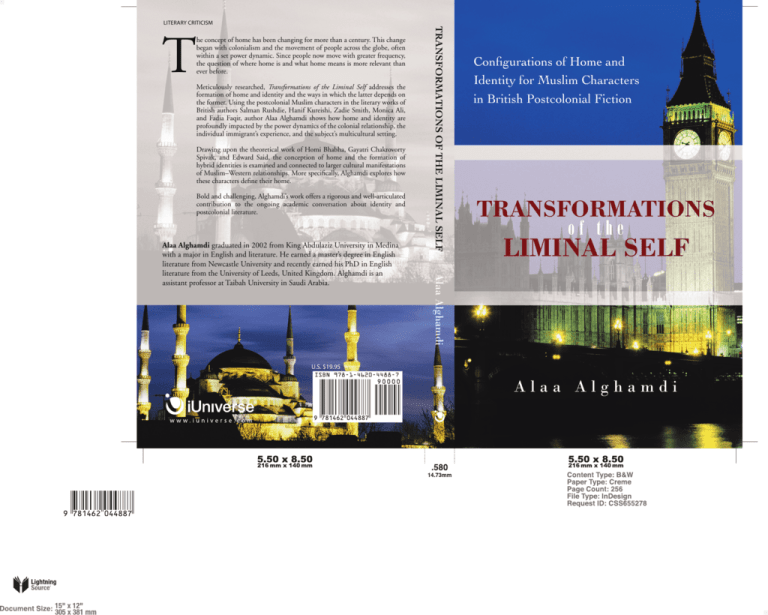
LITERARY CRITICISM
Meticulously researched, Transformations of the Liminal Self addresses the
formation of home and identity and the ways in which the latter depends on
the former. Using the postcolonial Muslim characters in the literary works of
British authors Salman Rushdie, Hanif Kureishi, Zadie Smith, Monica Ali,
and Fadia Faqir, author Alaa Alghamdi shows how home and identity are
profoundly impacted by the power dynamics of the colonial relationship, the
individual immigrant’s experience, and the subject’s multicultural setting.
Drawing upon the theoretical work of Homi Bhabha, Gayatri Chakrovorty
Spivak, and Edward Said, the conception of home and the formation of
hybrid identities is examined and connected to larger cultural manifestations
of Muslim–Western relationships. More specifically, Alghamdi explores how
these characters define their home.
Bold and challenging, Alghamdi’s work offers a rigorous and well-articulated
contribution to the ongoing academic conversation about identity and
postcolonial literature.
Configurations of Home and
Identity for Muslim Characters
in British Postcolonial Fiction
TRANSFORMATIONS
of the
LIMINAL SELF
Alaa Alghamdi
Alaa Alghamdi graduated in 2002 from King Abdulaziz University in Medina
with a major in English and literature. He earned a master’s degree in English
literature from Newcastle University and recently earned his PhD in English
literature from the University of Leeds, United Kingdom. Alghamdi is an
assistant professor at Taibah University in Saudi Arabia.
TRANSFORMATIONS OF THE LIMINAL SELF
T
he concept of home has been changing for more than a century. This change
began with colonialism and the movement of people across the globe, often
within a set power dynamic. Since people now move with greater frequency,
the question of where home is and what home means is more relevant than
ever before.
U.S. $19.95
Alaa Alghamdi
Transformations
of the Liminal Self
Transformations
of the Liminal Self
Configurations of Home and Identity
for Muslim Characters in
British Postcolonial Fiction
Alaa Alghamdi
iUniverse, Inc.
Bloomington
Transformations of the Liminal Self
Configurations of Home and Identity for Muslim Characters in British
Postcolonial Fiction
Copyright © 2011 by Alaa Alghamdi.
All rights reserved. No part of this book may be used or reproduced by any means, graphic,
electronic, or mechanical, including photocopying, recording, taping or by any information
storage retrieval system without the written permission of the publisher except in the case of
brief quotations embodied in critical articles and reviews.
iUniverse books may be ordered through booksellers or by contacting:
iUniverse
1663 Liberty Drive
Bloomington, IN 47403
www.iuniverse.com
1-800-Authors (1-800-288-4677)
Because of the dynamic nature of the Internet, any web addresses or links contained in this
book may have changed since publication and may no longer be valid. The views expressed
in this work are solely those of the author and do not necessarily reflect the views of the
publisher, and the publisher hereby disclaims any responsibility for them.
Any people depicted in stock imagery provided by Thinkstock are models, and such images
are being used for illustrative purposes only.
Certain stock imagery © Thinkstock.
ISBN: 978-1-4620-4488-7 (sc)
ISBN: 978-1-4620-4490-0 (hc)
ISBN: 978-1-4620-4489-4 (ebk)
Printed in the United States of America
iUniverse rev. date: 08/15/2011
Contents
Acknowledgement....................................................................... vii
Chapter One: Introduction...........................................................3
Chapter Two: Postcolonial Examination—
Foundations and Evolutions..................................................29
Chapter Three: The Satanic Verses by Salman Rushdie.................49
Chapter Four: The Buddha of Suburbia by Hanif Kureishi...........75
Chapter Five: White Teeth by Zadie Smith...................................99
Chapter Six: Brick Lane by Monica Ali......................................133
Chapter Seven: My Name is Salma by Fadia Faqir......................177
Chapter Eight: Conclusion........................................................213
Bibliography..............................................................................227
Acknowledgement
This book could not have been written without the help and support
of the following individuals.
I would like to express my indebtedness to my parents: to my father
for his unconditional support, and for being a perfect example for
me, and to my mother, who sacrificed so much for the sake of her
children, and for he constant prayers for me and for my success. I
likewise owe a debt of deepest gratitude to my uncle, Asem Hamdan,
who has been the prime source of inspiration in all venues of my
life. I am thankful for everything I have learned from him.
I am grateful to my sisters Mona and Rawan, who have always been
there for me, supported me, and encouraged me throughout my
research.
I am profoundly grateful for my sweet wife and best friend, Hadeel
Alsharif, for her unfailing encouragement, patience and support.
Finally, I wish to thank my friend and editor Malina Kordic, for her
tremendous help in making this publishing endeavor possible.
vii
Chapter One
Introduction: Home and Identity
in Postcolonial Perspectives
Chapter One: Introduction
Home and Identity in Postcolonial Perspectives
Of the multiple dilemmas that affect the postcolonial subject, the
interaction between home and personal identity is one of the most
pervasive and probably the most profound. Throughout much of
human history, one’s home was a fixed concept—stable, pure, and
intact. It is possible to see remnants of that placid and uneventful
conception of home and its affect on identity among members
of an intact culture, one in which there is little or no discernible
contrast between the individual and the larger society. Identity may
be attached to a certain geographical locale, and will certainly be
embedded within a culture. However, the disruption caused by
the colonial contact between cultures has had a long and complex
legacy, and the examination of home and its effect on identity is
central to the issues that emanate from this legacy.
Colonialism mixed cultures and set up an uneven power dynamic
between them. The concept of the Other, an individual living within
a society but always seen as belonging to it in a lesser or different
way, was created. Cultures have been permanently altered, leading
to a situation in which individuals, because of their race or cultural
history, are able to identify with some aspects of the society but
not with others. For all of these reasons, there has been a pressing
need to re-define the concept of home as it applies to members
of Postcolonial and multicultural societies in the twentieth and
twenty-first centuries. Home has become a contested concept, no
longer predictably applicable to a discreet geographic set of cultural
practices, given the formation of novel, hybrid and liminal positions.
3
Alaa Alghamdi
We must always question, therefore, what a Postcolonial subject
actually means when he or she speaks of ‘home’. In The Politics of
Home, Rosemary Marangoly George (1999) discusses, at the outset,
the imaginary properties of home for the Postcolonial subject,
noting that home is a “desire” for a stable, rooted identity, and that
realistic works of fiction reflect this by situating themselves “. . . in
the gap between the realities and the idealizations that have made
‘home’ such an auratic term” (George 1999: 2). George implies,
therefore, that the personal and social meanings of home have been
significantly altered, and that this change in turn can be extrapolated
and characterized—even if not precisely defined—from the works
of novelists who examine and represent the permutations of home
experienced by these subjects.
George notes that many scholars of the twentieth century (including,
for example, Gaston Bachelard, Clara Cooper, David Sopher, Yi-Fu
Tuan, Douglas Porteous, Adrian Forty and Witold Rybczynski) have
drawn a close correlation between home and self-identity (1999:
20). Both concepts are, however, malleable. When people occupy
a place over a long period of time, the experiences and practices
that emerge within it influence the self-identity of those who live
there. However, for subjects who have left or been parted from
their original setting self-identity may become fragmentary, divided
between identification with the older and newer setting. Home may
become ‘imaginary’ or ‘desired’, if the focus is on a union with a
setting and range of practices no longer accessible to the subject.
At the same time, of course, self-identity through the bonding with
a sense of home may be stymied by exclusion or marginalization
within one’s new social context and culture.
Identification with one’s home or homeland becomes complex
and problematic in the case of the exile or immigrant subject
because the homeland has been altered, left behind, or otherwise
inaccessible. Within this context, the examination of individual
identity formation relative to the notion of home becomes relevant
to virtually everyone in society. The intersection between the two
4
Transformations of the Liminal Self
can no longer be taken for granted. An examination of all aspects
of home and identity, for all subjects, becomes widely applicable to
literature and life. Our current and continuing movement towards
globalization merely increases the complexity of the interaction
between home and identity and renders it universally applicable.
A pure or stable notion of home may refer to one’s place and culture
of origin, but if the subject has left his or her homeland (either
voluntarily or through necessity) and has no direct access to it, this
construction of ‘home’ becomes less reliable. Its power may increase
even as its tangible qualities diminish. As one critic describes it, the
notion of home has extended beyond its “primary connotation . . .
of the ‘private space’ from which the individual travels into the larger
arenas of life and to which he or she returns at the end of the day . . .
home is also the imagined location that can be more readily fixed in
a mental landscape than in actual geography” (George, 1999: 11).
The idea of home can acquire more power in the absence of access
to the place itself, and this imagined construct has the power to
strongly influence issues surrounding the intersection of home
and identity. Constantly referencing an imagined homeland is
problematic for the Postcolonial subject if it creates nostalgia for
something inaccessible or if it serves to accentuate the alienation
of a subject from his or her immediate surroundings and culture.
In some cases, the family unit may be disrupted or fragmented due
to a member’s loyalty to an abstract notion of home or homeland.
The subject’s loyalty may be split due to a dichotomy between his
or her homeland and actual, physical home. The subject may also
experience discrimination or simply a lack of understanding in his
present environment, causing him to identify more closely with
the original homeland. In short, a great variety of possibilities exist
with regard to this complex interaction. Unlike a physical home,
the imagined home or homeland as an abstract concept transcends
time and space. The idea is powerful and pervasive, though its
definition and manifestation is highly variable. The power of the
imagined home or homeland may be central to an understanding of
5
Alaa Alghamdi
the Postcolonial subject with regard to his or her identity formation.
Specifically, in the immigrant or exiled subject, the ephemeral,
indefinite or imaginary construction of home and self-identification
with this imaginary notion of home ultimately impacts the subject’s
ability to form a hybrid identity. Postcolonial theory, understood
within the broader context of postmodern inquiry into identity and
other key concepts, provides a useful framework through which to
examine the immigrant or exiled subject’s formation of identity.
Accordingly, this research and analysis applies Postcolonial theory to
the examination of the home-identity interaction in the Postcolonial
subject of Muslim origin. Assuming for the moment that hybrid
identity formation is the objective for a Muslim character living
in and adjusting to a multicultural context, the identification or
over-identification with an ‘imagined home’ or homeland may
hold the individual back and prevent the evolution of identity. It is
equally important to acknowledge that, conversely, the identification
with the imagined or remembered home as a relatively stable entity
may also provide a unique foundation for the evolution of new
Postcolonial identities.
These questions are addressed through a juxtaposition of the
depictions of the search for home and selfhood in the works of
Salman Rushdie, Hanif Kureishi, Monica Ali, Zadie Smith, and
Fadia Faqir. Whether literal or symbolic, the notions of home and
identity warrant a re-examination within a Postcolonial theoretical
context, with the ultimate objective of explicating the nature and
result of the interaction between the subject and his or her new
and old, stable and shifting, lived and imaginary notions of home.
The identity that springs from the identification with these various
‘homes’ may be a liminal one, allowing the subject to straddle
various cultures and identities and create an innovative but fully
functional identity. In fact, it is the strength and variety of such
identities that reveals the resilience and promise of the Postcolonial
subject. Postcolonial inquiry, which once focused on the loss of
identity and the marginalization of minority subjects, may now
potentially transcend these concerns and examine the strong, novel
6
Transformations of the Liminal Self
and unique identity formation which does occur among liminal
subjects. Liminality and hybridity may come to characterize home
and identify formation the majority of individuals in the twenty-first
century.
The modern or Postmodern novel is the ideal forum in which to
explore questions of identity and home in the Postcolonial. Hanif
Kureishi considers the novel to be “the most capacious, the most
sensual form [of literature]”, capable of capturing and conveying
human experience in a multifaceted manner (“Hanif Kureishi
Interview”, n.d.). The French novelist Louis Aragon called the novel
“the key to forbidden rooms in our house” (cited by Faqir, 1998:
86), acknowledging that novels have a unique capacity to let the
reader into the subject’s home, space and work, and thus effectively
interrogate it. Moreover, novels have the unique ability to allow for an
examination of the subject in situ, embedded within and influenced
by a full complement of human, cultural and geographical contexts.
After all, self-identification cannot exist in a vacuum.
Novels are, moreover, excellent tools for promoting understanding
through the depiction of culturally and racially diverse subjects,
Postcolonial writers have added greatly to readers’ knowledge of,
experience with and empathy for the issues facing the potentially
fragmented subject attempting to acquire a cohesive and coherent
identity. In addition, novels are perhaps particularly well suited to the
discussion of Postcolonial subjects because they provide immediacy
and an ease of identification with the subject, erasing or diminishing
cultural divisions that may otherwise separate individuals within a
multi-cultural society. A reader who would not be able to identify
with a subject represented through statistics or other objective forms
of representation may readily identify with such a subject within the
rich context provided by a novelist.
For a writer dealing with themes that are related to Muslim culture,
the novel has a particular significance in that it provides a forum for
7
Alaa Alghamdi
the exploration of a shifting sense of social, political and religious
identity. Edward Said states:
The one place in which there’s been some interesting
and innovative work done in Arab intellectual life is in
literary production generally, that never finds its way
into studies of the Middle East. You’re dealing with the
raw material of Politics . . . You can deal with a novelist
as a kind of witness to something. (Middle East Report
1988: 33)
Said implies that it is through literary production that the subject
can be represented relatively free from external influence and foreign
contextualization or explication. Whereas supposedly objective and
unbiased non-fiction sources may carry and reproduce the bias of
the dominant culture, the novel (at least potentially, appropriation
issues notwithstanding) provides a forum in which the Postcolonial
subject can speak for himself or herself.
The Postcolonial subject’s identity is hybrid because it is based
on based upon multiple notions of home. The subject is a liminal
figure because he exists on the threshold of multiple realities,
navigating between them and potentially forming an identity based
on hybridity. While it is appealing, on a theoretical level, to present
such hybridity as strength, it can just as readily be experienced as
conflict and weakness, and evaluation of the subject’s position must
take into account a multiplicity of experiences. The formation of a
liminal identity as the result of the loss of one’s original home and
the need to adjust to a new one may even be liberating, as it may
free the subject to form novel and unique identities which carry
their own strength. Ultimately, both the positive and negative effects
of hybridity must be considered. Personal limitations cannot be
minimized or discounted; nor should they circumvent exploration
of the fertile possibilities presented by increasingly varied identities,
some of which have not been covered by prior literary criticism.
8
Transformations of the Liminal Self
This book attempts to demonstrate how the selected literary
texts promote an increasingly multifarious and resilient vision
of the Postcolonial Muslim subject’s identity. The subjects under
examination are both empowered and limited by the parameters
of memory, history, tradition, belief, and personal experience, and
sometimes reach unprecedented forms of cultural participation. A
study of these Postcolonial Muslim subjects allows us to analyse
closely the process and outcome of identity formation in cases
where that process is fragmented and outcomes are unpredictable.
The eventual formation of identity in these subjects is testimony to
the resilience and ingenuity of the characters as well as the authors
who create them.
Postcolonial theory and criticism support the notion that the
liminal position may be one of strength, creativity and promise,
notwithstanding the challenges associated with occupying such a
position due to displacement from one’s homeland. According to
some critics, alienation itself is a catalyst. Memory is identified as
the factor primarily responsible for the imaginary reconstruction
of home, but it is noted that: “Memory does not revive the past
but constructs it” (Hua, 2006: 198). For those separated from
their homeland, history, and language, marginalized and perhaps
discriminated against in a new environment, and forced to rely on
that inherently unreliable element—memory—to produce identity,
diverse and creative methods of constructing the self have become
necessary.
Poet Derek Walcott’s statement “I’m either nobody, or I’m a nation”
(Walder, 1998: 123) aptly describes the essential paradox inherent
in the expatriate’s search for identity. While identity might indeed be
fragmented, lost, repressed or irretrievable, or otherwise indicative
of loss or dysfunction, it may also be true that the Postcolonial
subject’s identity, once formed, is such a novel conglomeration of
disparate parts that the result is the production of a unique “nation”
of one, which flourishes in ways previously undreamed of.
9
Alaa Alghamdi
Immigrants, expatriates and exiles seem at an obvious disadvantage
with regard to their ability to evolve a sense of self and of home. As
the selected texts illustrate, when the move is to a new country with
a different religion, culture, and set of values, alienation from one’s
past and present surroundings may occur. Ultimately, there is a shift
in values, but this does not occur in a linear or predictable fashion.
The individual is subject to multiple and complex influences. As
one critical source states, “Identity is the product of history; on
the personal level, of memory . . . the sense of lack, or loss, of
living in a cultural vacuum, may [hold] back achievement”; there
is a drive, therefore, to “[forge] a new present and future out of
many pasts” (Walder, 1998: 121-3). Marginality in and of itself can
have a positive effect, driving subjects toward creative and novel
identity formation. This ‘creative energy’, once unleashed, takes on
multiple forms. Describing the work of Salman Rushdie and Chitra
Banerjee Divakaruni, a critic notes that these and other writers, in
constructing a transnational sense of identity,
. . . use constructs of magic or the ‘esoteric’ to transcend
traditional notions of geographical borders, boundaries
of time and space, and limitations of identity. They
propose magical spaces (and people) with which to
redefine human abilities and communication, and to
re-examine issues such as intercultural violence, ethnic
identity, and an individual’s responsibility for war.
Sacred, or what I will discuss in the context of the
novels in this chapter as a ‘magical’ space, allows for
alternative readings of both past and future (Grace,
2007: 117-18).
No longer contained within or limited by an intact history or set
of traditional, cultural and religious values, these authors and the
characters they depict may have unprecedented freedom to form
new identities, constructed from diverse elements of memory, social
realities, and individual and collective concerns. It is this potentiality
which is of most interest in our exploration of Postcolonial identity
10
Transformations of the Liminal Self
and homeland. Key characters in the primary works selected form
identities in distinct and diverse ways, within which common
themes may be observed.
Despite the commonalities noted, the diversity of characters
demonstrates the multiple—indeed, almost infinite—possibilities
that exist for identity formation in the Postcolonial era. Zadie Smith
and Hanif Kureishi’s works offer ample ground for comparison in
terms of voice, style and intended audience. Of course, Kureishi’s
comic slant ensures that the characters consist in part of strange
hybrids, some of them dysfunctional and ultimately unsuccessful
combinations of the two contrasting cultures. Kureishi’s first
novel, The Buddha of Suburbia, one of the earliest of the genre,
presents a portrayal of a Postcolonial subject whose navigation
through various personal and cultural influences results in a novel
and creative formation of identity and a sense of home, addressing,
in the process, multiple issues pertaining to the representation of
‘Other’ (specifically Asian) cultures. Zadie Smith offers us a variety
of characters, some of whom successfully create identity, though
some remain locked in opposing positions which limit them. Very
relevant to both of these works, as well as certain others, is the
distinction that some critics make between the ‘immigrant genre’
(i.e. narratives dealing primarily with characters who have voluntarily
immigrated) and novels dealing with characters who have lost their
original homes.
The ‘immigrant genre’ is “distinct from other Postcolonial literary
writing and even from the literature of exile, [though] it is closely
related to the two” (George, 1999: 171). There are profound
similarities regarding the loss of home and the construction of an
identity and identification with an ‘imagined’ homeland, or one
constructed from fragmentary and unreliable memory, because of
the distance imposed on the subject. As a result, “like the distance
that exile imposes on a writing subject, writers of the immigrant
genre also view the present in terms of its distance from the past and
future” (George, 1999: 171).
11
Alaa Alghamdi
The central issue, in fact, seems to be a loss of the continuity that a
stable and intact sense of home would provide. For subjects who exist
in essentially the same home and culture as their forefathers did, and
who expect this consistency to continue in future generations, time
moves along in a linear fashion, but there may be no consciousness
of a sharp division or distancing between past, present and future.
Elements of the past and present are, in a sense, within that subject’s
reach. On the other hand, for the subject who has been displaced,
either through his/her own choosing or involuntarily, there has been
a sharp, perhaps irreversible break between his/her own experiences
and those of his/her ancestors, to the same degree that home
influences experience and identity.
The past is irretrievable and there is a distance between it and the
present. Moreover, the life that future generations will forge in the
new country is largely unimaginable to the immigrant and exile;
thus, there is a perceived break in continuity from the future as well.
As George states, this element of distance is consistent in narratives
where the characters are immigrants and where they are exiles
(171). However, there are multiple distinctions; the ‘immigrant
genre’ being “marked by a disregard of national schemes, the use
of a multigenerational case of characters and a narrative tendency
towards repetitions and echoes (through several generations)”
(George, 1999: 171).
Thus, even though the characters typically experience separation, it
is the tendency of the writer to follow characters through multiple
generations, perhaps in order to compensate for and derive meaning
from and a sense of completion in the narrative, which cannot, in all
cases, be accomplished within the history of a single generation.
While the effects of immigration are multigenerational, George also
notes that “the immigrant genre is marked by a curiously detached
reading of the experience of ‘homelessness’ which is compensated for
by an excessive use of the metaphor of luggage, both spiritual and
material” (George, 1999: 171). This is noted with regard to many
12
Transformations of the Liminal Self
of the selected narratives, particularly those of Smith and Kureishi.
For example, humour is a potent form of detachment.
The interrogation of home and identity in the novels is influenced
by formal aspects of the novels themselves. Brick Lane by Monica
Ali, being traditional as opposed to postmodern in structure,
demonstrates identity formation in a more subtle manner while
expressing many of the same characteristics described above.
Characters are displaced and alienated, and selectively adapt to
elements and values that were foreign to them at the outset. At the
same time, this adaptation generally does not consist of a rejection
of traditional Islamic values, but a subtle adjustment. Here again,
the influence of an absent homeland constructed through memory
is shown to contribute to the subjects’ identity formation. Liminal
subjects in Salman Rushdie’s and Fadia Faqir’s novels, on the
other hand, point out the potential limitations of hybrid identity
formation. The principal characters in My Name is Salma and The
Satanic Verses are ones who achieve and ultimately lose the hybrid
identity, displaying its vulnerabilities and fault lines.
Understanding Postcolonial concepts requires a thorough exploration
of the key conceptual frameworks relevant to the colonial voice
and genre. Colonial relationships have a very long history, perhaps
as long as the Eastern/Western relationship itself, as Europeans
throughout classical times (in particular during the Roman Empire)
conceived of a ‘need’ to conquer territory and spread aspects of their
culture and civilisation.
After the fall of the Roman Empire in the West, the opposition
between the Christian West, the Muslim East, and the Byzantine
culture which brought a unique construction of Western thought
into Eastern territory became a crucible for the formation of
oppositional identities and the competition for territorial and
ideological control. The Crusades, popularized as an effort to ‘regain’
the Biblical territories for the Christian West, clearly conflated
the notions of territorial and ideological control, which did not
13
Alaa Alghamdi
subsequently diminish. As Edward Said proposes, the opposition
between the East and the West and the Western construction of an
exotic Other, the ‘Oriental’ persona, became a fundamental part of
Western self-identity (Said 1978).
Stemming from this ideological foundation, and augmented
by the colonial era and British supremacy of the eighteenth and
nineteenth centuries, colonial thought subjected the differences
between cultures to a clear value judgment. Western standards,
thoughts, customs, technology and behaviour were a dominant
norm, providing a seeming moral justification for the takeover of
supposedly less civilized territories. The colonial relationship was
always based on an uneven power dynamic and an exploitation of
the colonized country by the colonizer.
Imaginative rhetoric attempted to conceal, transform or justify
the unequal power relationships wrought by colonialism. For
example, colonizers sometimes conceptualized themselves as
parents to the supposedly less developed and more primitive
colonized population. Much of Christian rhetoric carried with it
a moral imperative to evangelize the ‘heathens’ of the East, who
would suffer the punishments of hell without the intervention of
the colonizer. The notion of the “white man’s burden” (Easterly
2006) racialized colonial relations, linking race and culture to the
ultimately self-serving desire of the white Western colonizer to make
colonized cultures and people more like their own. The use of the
word “burden” implies that this is a sacred duty rather than an act
of violence or oppression.
Following the end of the Second World War, however, the
weakening of colonial powers resulted in liberation movements
and a nationalist identity in many former colonies. The resulting
creation of Postcolonialism as a cultural consciousness and field of
study began with the re-examination of fundamental relationships,
includes seminal works by Edward Said, Homi Bhabha, Gayatri
Spivak, and others. Arguably, though, Postcolonial interrogation
14
Transformations of the Liminal Self
did not spring out of the void, but was necessarily predicated upon
the works of Michel Foucault, the first to identify and interrogate a
culturally constructed identity.
Foucault initiated the view of identity as a manufactured or
constructed thing rather than an essential and therefore unchanging
description of the inborn characteristics of a person or culture.
In Discipline and Punish and The History of Sexuality, Vol. 1,
Foucault observes the ways in which a set of cultural practices and
social institutions have been instrumental in shaping identity, but
notes that these elements are often not recognized even by those
who are affected most powerfully and directly by them. This
observation led Foucault to develop a “genealogical” examination of
history—genealogical in that it engaged directly with the genesis or
origin of elements that we might take for granted otherwise. Thus,
we are able to examine “the present time, and . . . what we are, in this
very moment” in a way that tends to “dissipate what is familiar and
accepted” and concentrate, instead, on what is behind the original
formation of norms (Foucault, 1988: 265).
A distinct form of social critique grew out of this genealogical
enquiry, the ultimate objective of which is to analyze “the historical
limits that are imposed on us” with the possibility of one day going
beyond them (Foucault, 1984: 50). The trajectory between these
enquiries on the part of Foucault and modern Postcolonial analysis
is quite evident. Although Foucault’s philosophy has more often
been applied to issues of gender, the Postcolonial enquiry into
identity and the relationship between marginalized and dominant
cultures clearly stems from Foucault’s original enquiries. If identity is
constructed, there are traceable reasons behind the attitudes, beliefs
and behaviours perpetuated by an individual, community or culture.
Things that appear ‘natural’ or ‘instinctive’ due to their ubiquitous
presence are in fact constructions, deliberate or otherwise. This most
basic enquiry into the nature of identity gave rise to a comprehensive
Postmodern examination of all social relationships and positions;
for example, feminist analysis and gender studies grew up alongside
15
Alaa Alghamdi
Postcolonial studies, presenting a parallel analysis with a similarly
stringent enquiry into why we are who we are, stripping away even
the most seemingly inborn characteristics and holding them up for
analysis.
In Orientalism (1978), Said examines the cultural and identity
differences between East and West, noting that both are created and
exaggerated through the creation of an ‘exotic’ Eastern or Oriental
identity, and opposition or disparity which in turn allows the West
to self-identify. Thus, Orientalist scholars cultivated an image of the
East as “irrational,” “depraved,” “childlike” and “different” (Said,
1978:40). In contrast, the West characterizes itself as “rational,”
“virtuous,” “mature,” and “normal”, the antithesis of all that is
Oriental (Said, 1978: 40). Of course, to those who identify with the
East as a real or imagined ‘homeland’, Orientalism may become a
mediating factor preventing a true experience of home. To those who
identify with the West, this view of the ‘Orient’, if left unexamined,
is perpetuated and continues to divide and define a hybrid and
diverse culture. For Postcolonial subjects who find themselves living
in the West and attempting to construct identity based on a hybrid
notion of home, internalizing this deeply embedded standard will
inform and, indeed, skew their perceptions, greatly problematizing
the development of an authentic sense of home, homeland, identity,
and belonging.
In several seminal works, Homi Bhabha emphasizes the importance
of social power relations in his working definition of subaltern
groups as “oppressed, minority groups whose presence was crucial
to the self-definition of the majority group: subaltern social groups
were also in a position to subvert the authority of those who had
hegemonic power” (Bhabha quoted in Chambers and Curti, 1996:
210).
In his 1994 book entitled The Location of Culture, Bhabha
concludes that, in the West, there is a need for us to shift towards a
“performative” and “enunciatory present”. This is seen by Bhabha
16
Transformations of the Liminal Self
as a necessary basis for fewer violent interactions and a decreased
compulsion to colonize those who are viewed as ‘Other’. In The
Location of Culture (1994), Bhabha investigates hybridity as a source
of ambivalence and anxiety in the individuals who are assumed
to have power within the colonial relationship. This observation
implies that hybridity challenges the established parameters of
the Postcolonial relationship between dominant and dominated
subjects. In a sense, all of Postcolonial theory and literature brings
us beyond the binary of dominant/marginalized identities. In the
end, in doing so, Postcolonial theory almost inevitably ends up
questioning itself and its own founding precepts.
The need for this questioning becomes more apparent as one delves
deeper into Postcolonial theory. After all, the process of questioning
identity and representation is not a finite process, but ideally becomes
a lens through which we can examine all cultural voices and practices.
Such examination must indeed include a stringent interrogation of the
very voices that initiate scholarship. Thus, in her 1988 essay entitled
“Can the Subaltern Speak?”, Gayarti Chakravorty Spivak seriously
questions whether the ‘subaltern’—the marginalized individuals
and populations—have a voice that can be heard by others in the
world, or whether that voice has been interpreted and appropriated
by western scholarship. Spivak takes as her example the women in
India who practiced ‘sati’, a tradition wherein a widowed woman
would climb onto her husband’s funeral pyre in a form of suicide,
seemingly indicating that the woman’s life, in and of itself, had no
value. The practice is decried and considered, quite understandably,
the epitome of marginalization and devaluation of women’s lives.
However, as Spivak (1988) points out, one never hears the voices
of the women who actually participate in this practice. We know
next to nothing about their feelings, experience, or rationale. The
Western academic world is much quicker to speak up in defence
of these women than it is to hear them. This, Spivak argues, is an
oversight which is difficult to overcome because it undermines the
established foundations of scholarship. On the other hand, failing
17
Alaa Alghamdi
to question these foundations merely reproduces the colonial power
imbalance, albeit in a different form.
Postcolonial criticism, in its most basic and fundamental distillation,
leads us to question the basis and formation of individual and social
identity and the relationship between various identities. ‘Identity’,
in this sense, can be said to encompass collective beliefs and
practices that seem intrinsic to the individual or the larger culture.
Once the enquiry into identity was begun, it became necessary for
it to continue, as each examination yielded evidence of the legacy of
unequal power relationships between individuals and cultures.
The most current critiques of the work of Foucault, Edward Said,
Spivak and other Postmodernist or Postcolonial scholars point out
that the tendency to ‘essentialize’ is even more difficult to strip away
than may be initially imagined. It has been noted, for example, that
the societal and cultural disciplinary power envisioned by Foucault
tends to assume the disempowerment of those who are subject to it.
Foucault’s analysis may tend to homogenize the response to cultural
coercion and hegemony, and conceptualize no way in which a
subjected individual can escape or gain power. Said’s concept of
Orientalism, likewise, is currently controversial in that, according
to his critics, Said himself (given his Western education) may not be
equipped to examine the Orientalized subject.
Yet such critique in and of itself may tend to assume that the subject
in question has immutable characteristics and predictable responses
to his or her own subjugation. Again, in order to even attempt to
understand these subaltern characters, the assumption is made that
they must possess a finite and defined set of characteristics. The
examination of power sometimes seems to preclude both individual
variations in the experience of and response to that power and the
formation of novel identities which challenge rather than capitulate
to the imbalance of power, yet this is precisely the trap that one
must avoid falling into. Within queer theory, an offshoot of feminist
studies, and the enquiry into socially constructed identities, the
18
Transformations of the Liminal Self
personal label ‘queer’ is used to indicate not an identity per se, but a
critique of identity. A person may self-identify as queer if he or she
does not accept or wishes to critique the sexual identity that society
transmits (Jagose 1996). One thing that has become abundantly
clear during the preceding enquiry into identity among Postcolonial
subjects is that there is a need for an equivalent label among those
who do not accept and wish to interrogate the basic precepts of
cultural identity. Such a label would be a convenient shorthand for
expressing a rather complex idea or set of ideas. Moreover, it could
apply not only to those who are forced into a position of enquiry
by their social or cultural displacement or alienation, but also those
who consciously choose to undertake an enquiry of cultural identity,
thus building solidarity between Postcolonial subjects and critics.
The creation of novel and innovative identities that do not necessarily
fit any existing mold is the focus of this research, and one of the key
areas of interest in modern Postcolonial thought and criticism. The
promise lies in bringing these elements into balance, recognizing
coercive power and cultural hegemony while appreciating the
distinct qualities of every individual. Otherwise, this analysis may
tend to erase differences between individuals, and, even worse, it
may limit or underestimate the individual’s capacity for redefining
the relationship with power and forming novel identities.
In the realm of politics and society, the need to interrogate cultural
identity and its attendant stereotypes is currently reaching a crisis
point. The position of Muslims in Western societies has changed
significantly in the years since September 11, 2001, but the changes
are more complex than is sometimes assumed. The increase in
‘Islamophobia’ is one generalized reaction to the 9/11 terrorist
attacks in New York City.
The term Islamophobia is sometimes used to describe the attitudes
of non-Muslims towards Muslim citizens of European countries.
Although the term was coined as far back as 1922 (Cesari 2006),
it is finding new application since 9/11. Although the term is
19
Alaa Alghamdi
criticized in academic circles because it is imprecisely applied, it
is an apt term, predating current concerns about terrorism and
originally encapsulating a generalized xenophobia and the conflicts
between the Christian and Muslim worlds that have occurred since
the Crusades of the Middle Ages. Discrimination against Muslim
people in the West existed before 9/11; for example, American
studies dating from the 1980s and 1990s reveal broad-based social
and professional exclusion of Muslim citizens from high-ranking
professional and civic positions (Cainkar n.d.). These same studies
reveal that the situation was improving by the 1990s, only to
suffer a huge setback following 9/11. However, the discrimination
against Muslim people prior to the 9/11 terrorist attacks was often
not recognized as such. Demographically, these individuals were
“hidden under the Caucasian label” (ibid) and this sometimes
minimized their marginality, or the perception of it. The biggest
shift, therefore, since 9/11 was that the Arab populations of
Western powers suddenly became visible, as did acts of racism
perpetrated against them. In the period immediately following the
terrorist attacks, 645 ‘bias incidents’ and hate crimes against Arabs
and South Asians were reported in the US. A mosque was attacked
in Chicago the following day, followed by near-continuous attacks
against Muslim-based organizations and buildings (ibid).
The resurgence of the term ‘Islamophobia’ in this new historical
context post-9/11 is not the only example of the resurrecting,
sometimes conscious, of an antiquated terminology. As reported by
BBC journalist Barnaby Mason in the week following September
11, 2001, US President George W. Bush specifically referred to the
war on terrorism as a ‘crusade’, much to the consternation of British
Prime Minister Tony Blair. Bush’s statement ran directly counter to
Blair’s stated objective of preventing the framing of the 9/11 attacks
and the ensuing international conflict as a war between religions.
The mention of the crusades—historical wars waged by Christians
against Muslims—was problematic on several levels.
20
Transformations of the Liminal Self
The medieval crusades were exploitative wars whose objective was
to gain control of the ‘holy lands’ in the East, and as such involved
an invasion of foreign territory. Naturally enough, the term was
distressing to people in Muslim countries based on the historical
episodes it refers to. Moreover, in its common usage, the term crusade
implies a righteous war—literally a war in the name of the Cross, or
in the name of God. As Mason implies, it is this latter application,
in its generalized sense, that President Bush was invoking; his likely
meaning being that the war on terrorism is a just or righteous war.
However, in using such a historically loaded term, the ‘righteous’ or
‘just’ conflict against terrorism is easily identifiable as a war against
Islam itself, just as the original crusades were.
Whether or not Bush was fully cognizant of how “full of historical
resonance in Europe and the Middle East” (Mason 2001) the term
he employed was, his statement was potentially very damaging to the
perception of Muslims in the West. A world leader had effectively
cast them as the parties on the ‘wrong’ side of a ‘holy’ or righteous
conflict. The effects of this vilification were ultimately felt in Europe
as well as in the United States, lending credence to the unfortunate
possibility that this was, indeed, a war between civilizations.
In Europe, the after-effects of the 9/11 terrorist attacks with
regard to their impact on Muslim populations have been almost
as dramatic as in America, and arguably even more far-reaching.
A 2006 British study of 222 British Muslims (Sheridan, 2006:
317), for example, showed a sharp increase in both indirect/implicit
discrimination and overt incidents of harassment or discrimination,
the latter having risen by 76.3% since 9/11, and the former by
82.6%, as reported by the affected individuals themselves (ibid).
These findings demonstrate, according to Lorraine Sheridan, that
both active discrimination and more passive or less perceptible
stereotyping have both increased dramatically in the years following
9/11.
21
Alaa Alghamdi
Stereotyping can have a pernicious effect on individuals that is as
disruptive to the formation of identity and a sense of belonging
as direct discrimination can be, precisely because it is subtle and
pervasive. The analysis of these findings includes the observation
that religion is a more significant factor in discrimination post-9/11
than race or ethnicity. This observation supports the notion that
Muslim minorities were ‘invisible’, or that they hid behind the
“Caucasian label”, prior to the 9/11 attacks. One wonders, however,
how this translates into practice, as religion is not always a quality
as race and ethnicity might be, and incidents of discrimination
against Muslim or Arab populations are not limited to those visibly
engaged (because of style of clothing, for example) in a specific
set of religious practices. If it is the case that religion (essentially,
‘Islamophobia’) rather than race or ethnicity motivates xenophobic
attacks, that distinction is nevertheless of little value to those who
find themselves under attack.
In the United States, where the 9/11 terrorist attacks occurred,
the drive towards increased homeland security has resulted in the
suspension of civil liberties for some Muslim and non-Muslim
individuals and groups. In Europe, the legislative aftermath of the
attacks has possibly been even more far-reaching. Liz Fekete (2004:
3) calls it an “attack on civil rights” directed at Muslim Europeans.
Governments have taken measures to step away from a multicultural
model or objective for their populations. Instead, assimilation and
‘monoculture’ are promoted (Fekete, 2004: 3). This is discernible
in several integration measures that countries have undertaken; one
example is the banning of the headscarf in France (Fekete, 2004: 3).
As of spring 2011, the French government will enact an ‘anti-burka’
law, making it illegal to cover one’s face in public by wearing a burka
or a niqab. These traditional garments, worn by women, conceal
the head and body, with an opening only for the eyes. The French
objection to wearing the burka or niqab references both security
and a concern about the discrimination of women under strict
Islamic law; however, it is perhaps particularly significant that one
22
Transformations of the Liminal Self
proposed consequence of breaking the proposed law is enrolment
in a citizenship course (Litchfield 2010), clearly implying that this
traditional garb is considered detrimental to the formation of one’s
identity as a French citizen.
However, it is also worth noting that the penalty for “‘forcing’ a
woman to wear a full-face veil” is exponentially harsher than the
penalty for actually wearing one (Litchfield 2010), giving some
credence to the idea that the law is meant to protect women.
Measures such as these are naturally controversial; in a sense,
regardless of the government’s motivations in promoting measures
like these, they are problematic by their very nature because they
make religious expression an item for public discussion and debate,
forcing Muslim populations to defend these aspects of culture and
faith, whereas less-visible (in other words, Christian) expressions
go unnoticed and are never open to debate. If, as Sheridan finds,
discrimination against Muslims in Europe is indeed more a matter
of religion than one of race or ethnicity, it only serves to make the
discrimination that is suffered more likely to become entrenched in
society through legislation. It may be impossible, in this day and age,
to legally discriminate on the basis of race, but religious practices
are considerably more vulnerable, and may be just as integral to
citizens’ sense of identity.
The more subtle effect of these changes since 9/11 is that they
constitute a threat to many of the strides that have been taken
with regard to the development of a hybrid culture where
multiculturalism becomes the norm. During the 1990s, particularly
in major cosmopolitan cities such as London, the melding of
cultures was producing a society in which the creation of an ‘Other’
was, though not eliminated, at least minimized. The drive towards
assimilation—both internal and external—directly counteracts
this trend. The immigrant subject may be able to establish an
identity based on the awareness of home in a multicultural society.
If multiculturalism is “rolled back” (Fekete, 2004: 3), identity
formation becomes, once again, a matter of opposition rather than
23
Alaa Alghamdi
integration. Sheridan (2006: 317) notes that, post 9/11, 35.67% of
the British Muslims surveyed suffered mental-health issues, most
often related to abuse or discrimination (Sheridan, 2006: 317).
The difficulties in forming identity are extremely far-reaching and
ultimately harmful for these individuals; the inequities of the colonial
system are echoed and magnified. Adopting as its foundation the
theoretical framework and reference to historical events introduced
in this chapter, this study assumes that Postcolonialism is based on
the experience of movement between cultures and geographical
areas, and the consequent experience of adjustment following the
loss of one’s original home or homeland.
New identities are formed through this process, along with new
conceptualizations of home. Leaving their homeland in order to
search for an adopted home, individuals may become (and regard
themselves as) exiles or immigrants, and they may have a personal
desire to either adhere to the customs and practices of their lost
homeland (sometimes harbouring a desire to return to that
homeland), or to assimilate to the standards of their new home. In
either case, however, the end result is commonly a hybridization of
identity, with elements taken from both cultures. The hybrid identity
can be, variably, a position of strength and/ or of vulnerability.
There is, of course, a distinction to be made between the immigrant
who has voluntarily left his home and the exile that has been forced
to leave.
As outlined previously, the dissimilarities are profound enough for
the ‘immigrant genre’ to be considered separately from the stories of
other types of ‘moving’ subjects by some critics.
However, the similarities can be profound, particularly with regard
to the question of losing one’s home, homeland or sense of home.
Andre Aciman brings unity to the two terms, arguing that an exile
is not always defined as “someone who has lost his home”, but may
also be defined as “someone who can’t find another, who can’t think
of another” (21). This may be common to all Postcolonial subjects
24
Transformations of the Liminal Self
who have left their countries of origin. On the other hand, it may
also be argued that the immigrant, at any rate, has some control over
the situation and may have come to the new home in the process
of exercising a positive choice. Moreover, the immigrant may have
a heightened tendency to harbour a desire to ‘return home’, given
that the home was left voluntarily and may presumably be returned
to voluntarily as well.
Novels dealing with immigrants (sometimes referred to as the
‘immigrant genre’ of novels) do indeed show a tendency to assimilate,
but with a marked difference between generations. The particular
plight of the second-generation immigrant, born in the new country
but remaining tied to the old because of cultural heritage as well as
possible exclusion, is sometimes even more difficult than that of
the first-generation immigrant. There is, also, an increased demand
for and possibility of such a subject forming a hybrid identity, or,
conversely, of failing in the attempt to do so. According to Stewart
Hall, displaced subjects feel the need to constantly “produc[e] and
reproduc[e] themselves anew through transformation and difference”
(Hall, 2008: 402). It is these transformations and differences which
will become the main focus of this research. Postcolonial subjects
take various routes to hybrid identity formation, some predictable,
others anything but.
The tacit objective of all of these characters seems to be the formation
of an identity which adequately covers the complexities of their
characterizations and allows them to participate meaningfully in
the society within which they find themselves. Some characters are
successful in this endeavour, others much less so. It is in the course of
examining these successes and failures that the influence of colonial
and Postcolonial cultural values will be examined. Moreover, the
ways in which the characters (successfully and unsuccessfully)
transcend and transform the values and norms of their old and new
cultures in the process of hybrid identity formation forms a basis
for beginning to define and examine the ongoing transformation
brought about by both the rise and the fall of colonialism.
25

